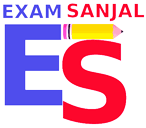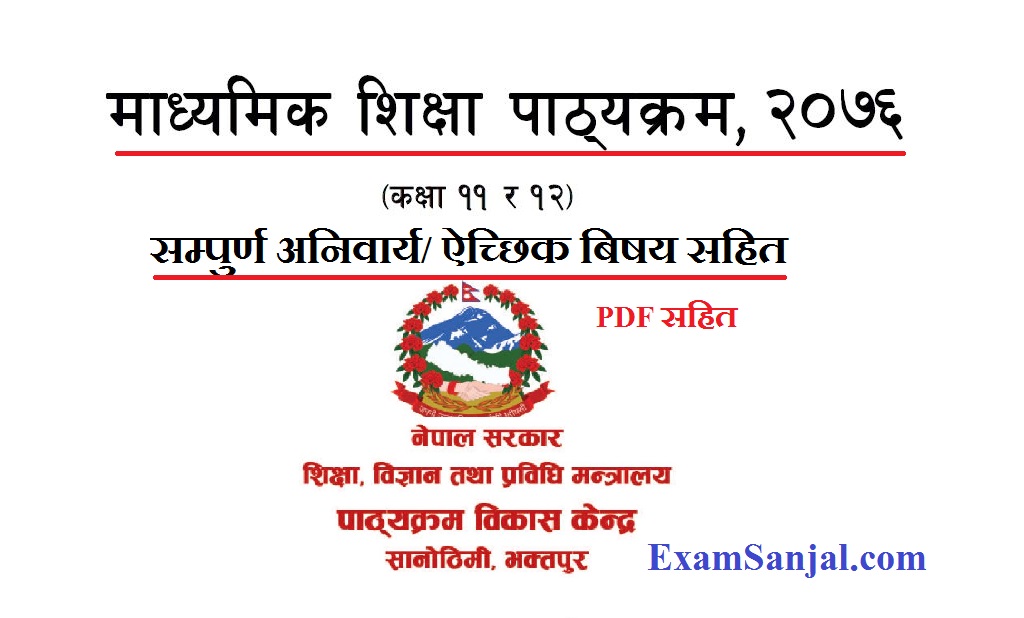Pathyakram Bikash Kendra Curriculum Development Center (CDC) published a new curriculum of Class 11 and 12 comopulsory subjects and optional subjects. Curriculum development, modification and updating is an ongoing process. The National Curriculum format is based on changed contexts, research reports, suggestions and feedback from various stakeholders including teachers, professors, students, intellectuals, suggestions from various organizations and professions, information and communication media and positive suggestions from civil society to make the curriculum relevant and inclusive. 2076 ready Epala has been approved by the Government.
The school level curriculum structure and guidelines for curriculum development, expansion and creation of knowledge, increased competition in the service sector and changes in the political, social and economic spheres have brought about the need for curriculum revision. In Nepal, school education should be developed as a means to help build capable and competitive citizens for building a prosperous nation based on social justice. Based on the mentioned context and approach of school education, curriculum structure for class 11 and 12 and thematic curricula have been developed according to that structure.
Click below to view the Curriculum of all compulsory subjects and optional subjects of Class 11 and 12.
- New Curriculum of Class 11 and 12 Compulsory Subjects .pdf
- New Curriculum of Class 11 and 12 Optional Subject First .pdf
- New Curriculum of Class 11 and 12 Optional Subject Second .pdf
- New Curriculum of Class 11 and 12 Optional Subject Third .pdf
- New Curriculum of Class 11 and 12 Optional Subject Fourth .pdf
- New Curriculum of Class 11 and 12 Optional Subject Fifth .pdf
- English
Grade: 11 and 12 Subject code:
Eng. 003 (Grade 11), Eng. 004 (Grade 12)
Credit hour: 4 Annual working hour: 128
Introduction
English is a lingua franca and is an appropriate international language for Nepal to be connected
with global community. It is not only the language of international communication but also a
language of higher education, mass media, information and communication technology (ICT),
business, tourism, science and medicine. In the context of Nepal, English is necessary for various
purposes.
To be specific, our learners need English to participate in classroom interactions; to
study course materials; to read things for pleasure and general information; to gain access to the
world body of knowledge; to read and enjoy a wide range of literary texts, to participate in
international meetings, seminars and conferences; to communicate with foreigners in general; to
enhance their career development, and many more. English is taught as a compulsory subject
from grade one to the bachelors level.
Ministry of Education, Science and Technology (MoEST) has approved the National Curriculum
Framework (NCF), 2076 addressing the changed socio-political condition of the country and the
current needs of the learners. This grade 11and 12 E nglish curriculum has been developed in line
with the spirit of the new NCF. The present curriculum addresses all four language skills with
prime focus on reading and writing skills. It focuses on the types of reading and writing skills that
are necessary for the students in their real life.
It also includes the language functions which the
students need for their further studies and the world of work. A strong grammatical foundation is
also given due consideration in this curriculum. This curriculum is based on the principle that
learners learn language when they get sufficient opportunity to use it in appropriate contexts.
Content should not be detached from the use of language. Content and language should be
integrated while teaching. Therefore, the curriculum has focused not only on language and
language functions, but also on a variety of fiction and non-fiction texts which provide a
meaningful context for language learning. For some students, secondary education serves as a
basis for preparation for the university education, whereas for some other students, it may be a
preparation for entry into the world of work. This curriculum tries to address the linguistic
requirements of both types of students.
This curriculum focuses on both the intensive reading of texts which is intended for language
development in the learners and the extensive reading of texts which is intended for processing
content and developing higher order reading and writing skills. Soft skills including critical
thinking and creativity of the students have also been given due importance. For this purpose, a
wide variety of texts have been included under various themes and topics. This curriculum
includes level-wise competencies of students, grade-wise learning outcomes, scope and sequence
of contents, learning facilitation process and evaluation process.
- Competencies
- This curriculum of Grade 11 and 12 in English language aims at developing the following
- competencies in the learners:
- Use both spoken and written English for general and academic purposes in a variety of
personal, social and academic contexts.
Secondary Education (Grade 11 & 12) Curriculum, 2076 (Part 1) 37 - Read a wide variety of texts for information and understanding.
- Read a variety of literary texts for pleasure and appreciation.
- Read, reflect and interpret a wide range of texts.
- Critically analyze and evaluate ideas in a wide range of level apprapriate taxts.
- Search, select and manage information from various textual and online sources.
- Create a variety of writing for different purposes and audiences with appropriate content,
style and accuracy. - Produce a variety of creative and critical writings.
- Appreciate diverse cultures.
- Listen and respond in English with accuracy and fluency
- Communicate clearly and effectively in a range of situations using verbal and non-verbal
communication strategies. - Grade-wise Learning Outcomes
The learning outcomes in this curriculum are distributed between grade eleven and twelve based
on their levels of difficulty. However, the same learning outcomes may be introduced in grade
eleven and consolidated in grade twelve. Therefore, these may go in a sequence and will be
addressed in the resource materials and pedagogy.

